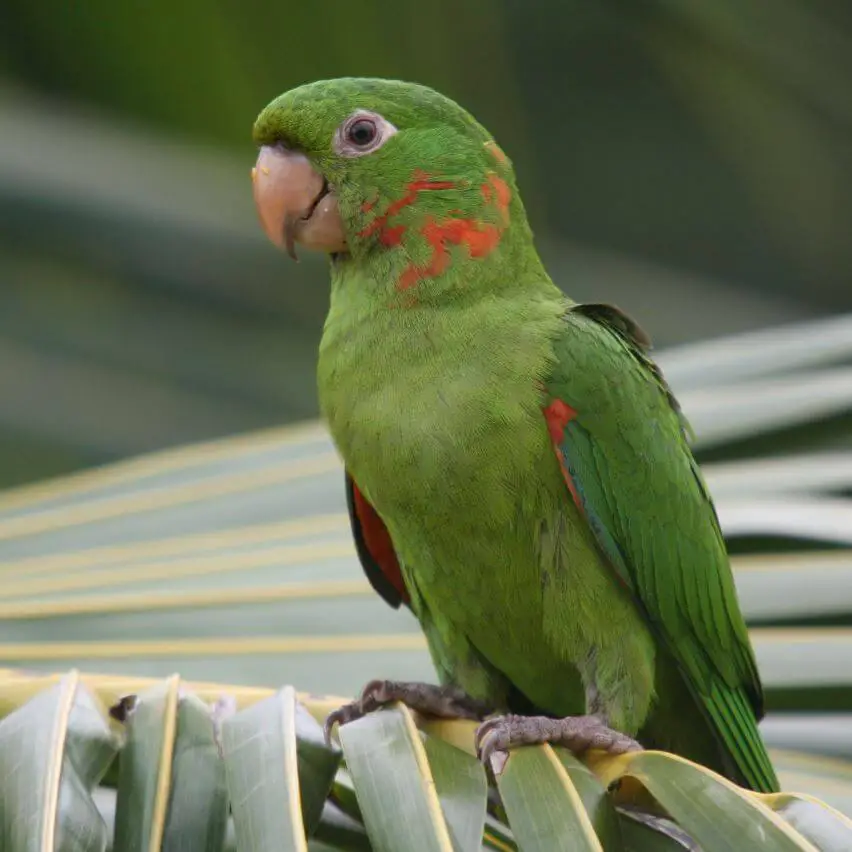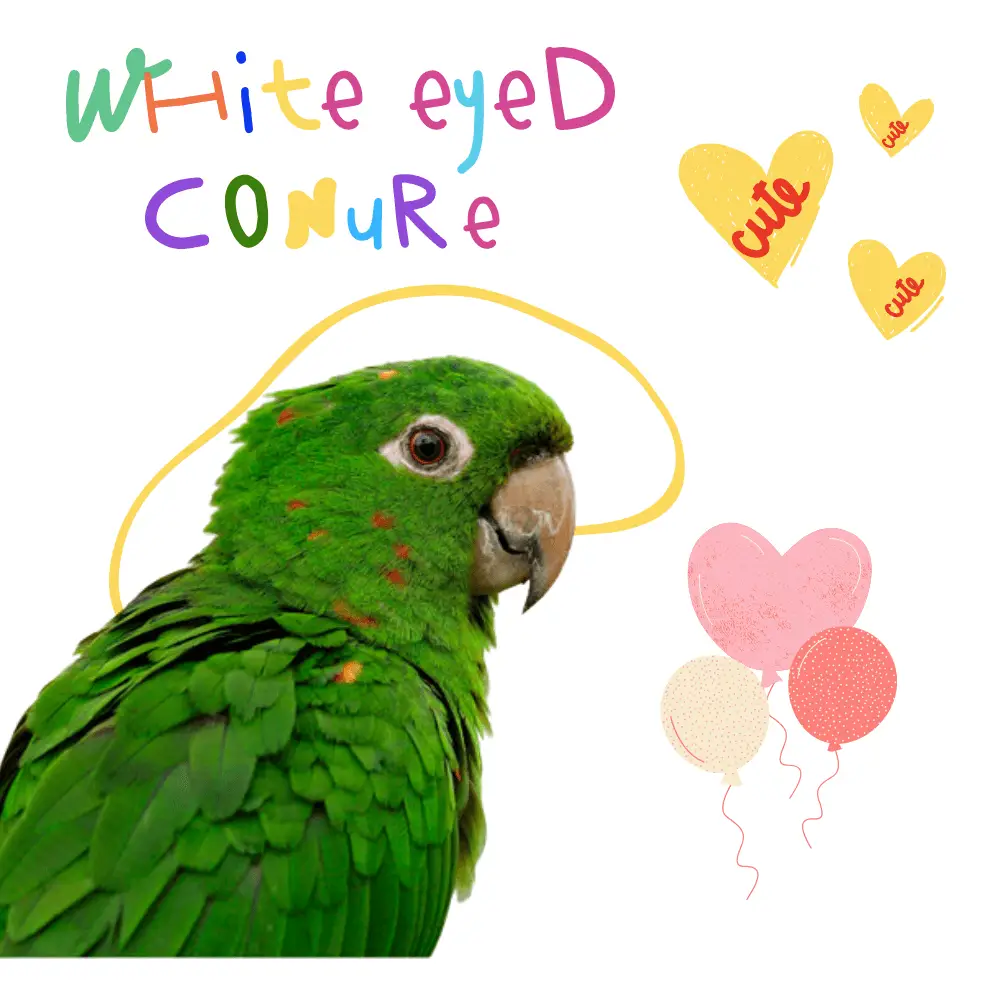White-Eyed Conure is a species of South American bird in the parrot family (Psittacidae) whose range extends from Venezuela to Argentina and Uruguay.
Taxonomy
It was first scientifically described in 1776 by the German ornithologist Philipp Ludwing Statius Müller.
Common name
The species White-Eyed Conure is known red-winged calancate or red-winged parrot in Argentina, periquitão-maracanã or periquitão in Brazil, a white-eyed parakeet in Colombia and Ecuador, a white-eyed parakeet in Venezuela.
Description
 White-Eyed Conure
White-Eyed Conure
Psittacara leucophthalmus measures between 30–34 cm in length and 37–40 cm in wingspan, weighing between 100 and 218 grams. 910 Itis a mostly green bird with red spots on the shoulders and random spots on the head and neck.
The lower primary wing coverts are red and yellow-tipped. 11 A prominent white ring around the eye gives this species its name.
Individuals with erythrism have been found, with individuals having yellow or orange feathers where they are usually green.
Etymology
The specific epithet leucophtalmus means “white eye”, from the Greek leukos (white) and ophthalmos (eye). Müller chose that name when describing the eyes surrounded by white rings.
Behavior
It is observed in flocks of 5 to 40 individuals in areas of humid forests or plains and also in urban centers.
It easily adapts to urban and degraded areas, as long as there are food sources and nesting places (under roofs and other cavities). It feeds on fruits and seeds. 7
Distribution and habitat
They are found in much of South America, including Trinidad in the Caribbean, from eastern Venezuela, Colombia, and the Guianas in the north through Brazil to Argentina and Uruguay in woodland, woodland, savannah, and mangrove swamps.
The southern limit of its distribution would be in Mar Chiquita, in the southeast of the province of Buenos Aires, Argentina.
White eyed conure talking
SOURCE: The Bird House Family
Conservation status
The species is listed in Appendix II of CITES. It is the least concerned category on the IUCN Red List.
According to the IUCN, this bird has been heavily trafficked since 1981 and its population is considered to be declining.
The trade-in of these birds is a concern regarding the transmission of zoonotic diseases.

